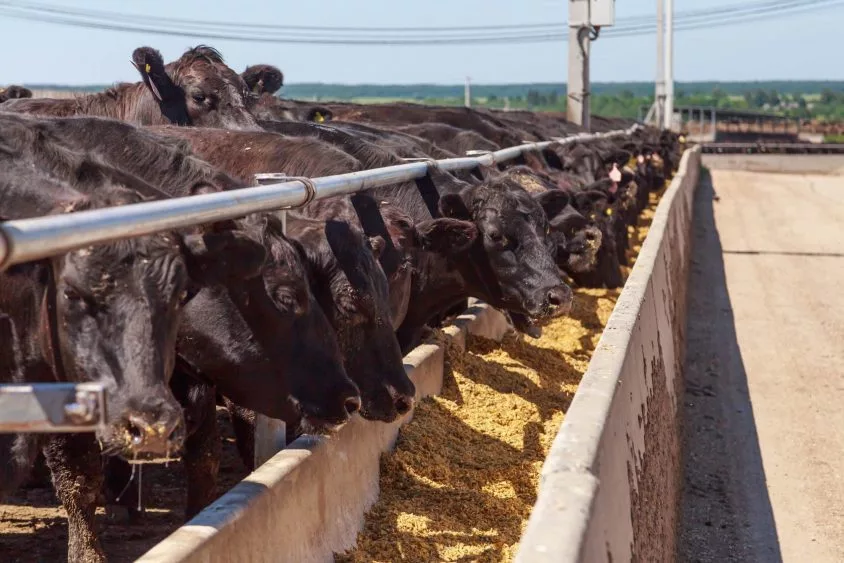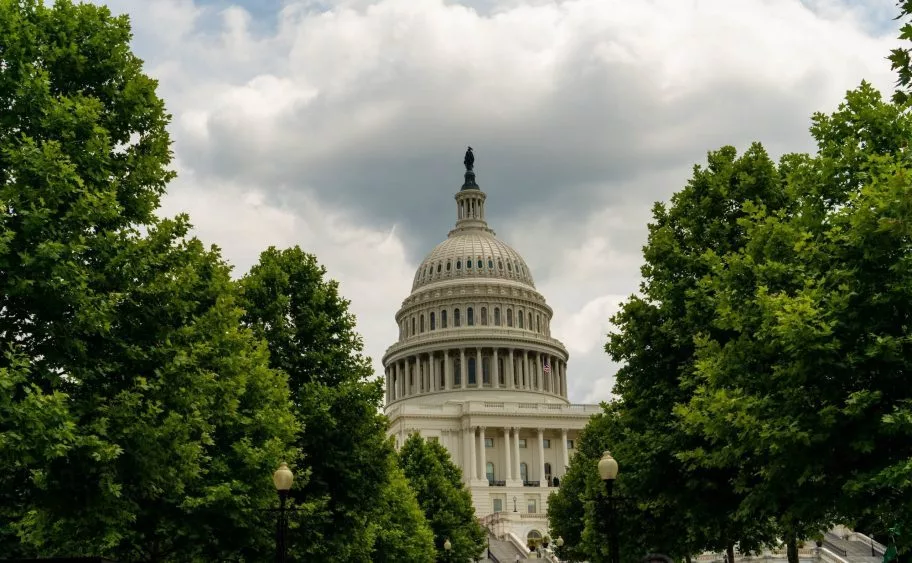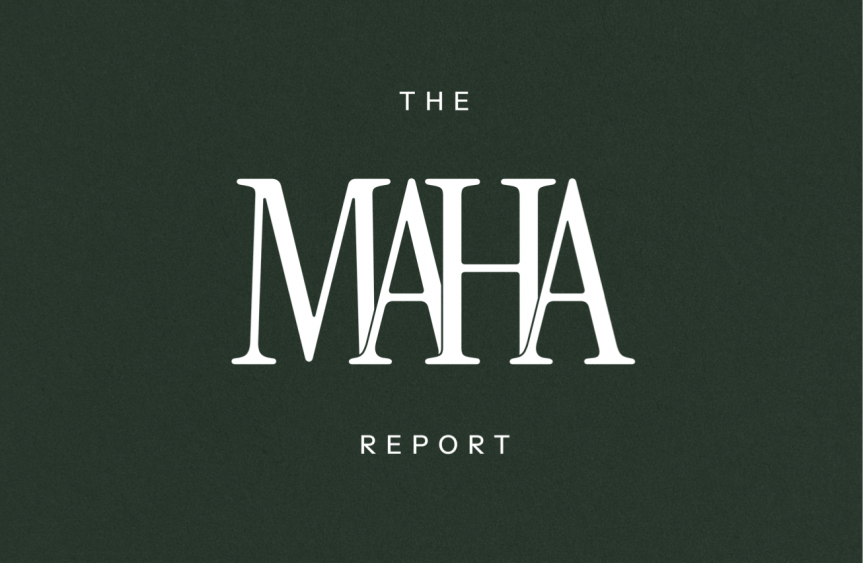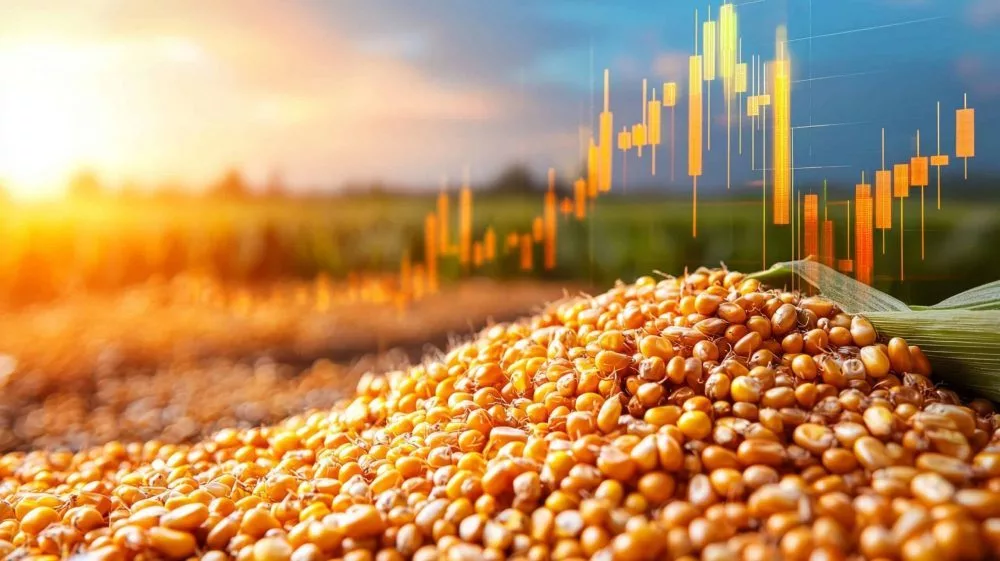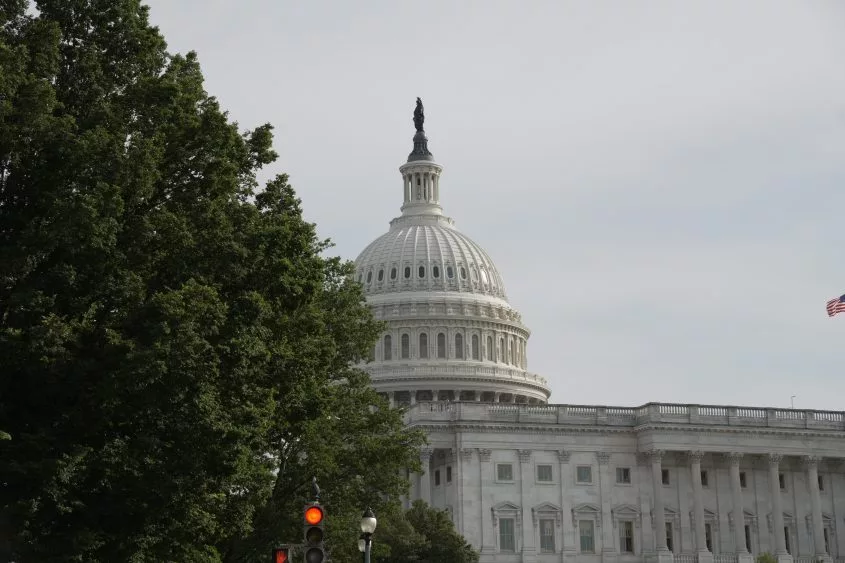
WASHINGTON — The U.S. House of Representatives narrowly passed President Donald Trump’s comprehensive tax and spending legislation, known as the “One Big Beautiful Bill Act,” in a 215–214 vote. The 1,000-page bill makes sweeping changes to tax policy, social programs and federal spending, aligning closely with Trump’s second-term agenda.
The tax legislation includes a suite of reforms aimed at providing financial relief and operational flexibility for farmers. Among them is an increase in the estate tax exemption, now set at $15 million for individuals and $30 million for married couples—helping family farms remain intact across generations.
The bill also expands the Section 179 deduction, allowing farmers to immediately expense up to $2.5 million in equipment purchases, with a higher phase-out threshold of $4 million—both indexed for inflation. It restores 100 percent bonus depreciation for property acquired between Jan. 20, 2025, and Jan. 1, 2030.
For farms operating as pass-through entities, the Section 199A deduction is increased from 20 percent to 23 percent. The bill also raises the 1099 reporting threshold from $600 to $2,000 and allows a 25 percent interest income exclusion on rural and agricultural real estate loans.
The legislation tightens work requirements for Supplemental Nutrition Assistance Program (SNAP) recipients, extending mandatory work hours for able-bodied adults without dependents up to age 64.
The bill effectively rolls back the 2021 update to the Thrifty Food Plan, which had increased SNAP benefits by 21 percent, and limits future SNAP benefit increases to inflation rates.
Beginning in 2028, states would be required to fund between 5 percent and 25 percent of SNAP benefits depending on their payment error rates. The federal share of administrative costs would be reduced from 50 percent to 25 percent, shifting the remaining burden to states.
Many lawmakers raised concerns about how states would handle the fiscal burden. For states with high error rates, this could result in substantial new liabilities.
Payment error rates reflect how accurately states administer SNAP, with the USDA targeting a national error rate below 6 percent. In 2019, the national rate was 7.36 percent. By 2023, that figure had risen to 11.68 percent, with 10.03 percent from overpayments and 1.64 percent from underpayments.
Many states doubled their total payment error rate during the COVID pandemic.
Take the Golden State for instance, California went from a 7.31 percent payment error rate with 6.42 percent being overpayments in 2019, to a 2023 payment error rate of 13.40 percent, with 11.61 percent being overpayments.
California has the highest number of CalFresh participants, 5.3 million in 2023. FY 2023, California issued approximately $14.3 billion in SNAP benefits. A 13.40 percent payment error rate in 2023 represents approximately $1.92 billion in incorrect benefit payments, with about $958 million of that total being overpayments.
The increase in payment errors has also drawn attention to how states apply federal rules around SNAP eligibility, particularly for Able-Bodied Adults Without Dependents, or ABAWDs. In states like California, where large-scale waivers have remained in place well beyond the height of the pandemic, critics argue that lenient enforcement may be contributing to the rise in overpayments.
ABAWDs are required to work or volunteer 80 hours per month to maintain SNAP eligibility. By law, you’re already excused from work requirements if you are; unable to work due to a physical or mental limitation; pregnant; have someone under the age of 18 in your household; a veteran; or experiencing homelessness, to name a few. Federal law permits states to waive this requirement in counties where unemployment reaches 10 percent or higher.
Representative Doug LaMalfa, a fourth generation rice farmer from northern California contends that California has taken advantage of this provision through overly broad application.
“The State of California… has manipulated completely that policy by allowing every single ABAWD to be exempt from work requirements by just declaring the whole state, all 58 counties being in a lacking of jobs mode,” said Rep. LaMalfa during the agriculture committee markup. “This reconciliation bill focuses the SNAP program on those who actually need it.”
In response to the COVID-19 pandemic and the passage of the Families First Coronavirus Response Act, the USDA approved a statewide waiver for California in April 2020. This waiver suspended the ABAWD time limit across all 58 counties, allowing ABAWDs to continue receiving CalFresh benefits without meeting the standard work requirements.
Even though the state’s unemployment rate dropped to pre-pandemic numbers in November 2022, the waiver remained in place. Under the waiver allowing able-bodied persons to stay unemployed, the unemployment rate in California increased to 4.8 percent in 2023, and to 5.3 percent in 2024. In fact, the previous administration approved an additional two-year statewide waiver effective February 1, 2025, through January 31, 2027.
The approval was based on California’s average unemployment rate being 20% above the national average for a 36-month period ending in November 2024.
It’s important to note that while the ABAWD time limit is waived during these periods, general SNAP work requirements still apply to other eligible individuals.
While California has the highest number of SNAP participants, that only makes up about 12 percent of the state’s population.
The state with the highest percentage of residents participating in SNAP is New Mexico, with 23.1 percent of its population receiving benefits in 2023. It had a 2019 payment error rate of 9.34 percent, with 7.32 percent being overpayments. For 2023, New Mexico’s total error rate was 14.40 percent, with 12.45 percent being overpayments.
New Mexico had approximately 518,800 SNAP participants in 2023. In FY 2023, the state issued around $1.2 billion in SNAP benefits. With a 14.40 percent payment error rate, this equates to approximately $172.8 million in incorrect benefit payments, with about $161.4 million being overpayments.
Oregon’s total payment error rate nearly doubled, rising from 9.74 percent in 2019 to 16.76 percent in 2023. While the overpayment rate increased by 7.12 percentage points, the state’s underpayment rates almost doubled as well.
Oregon had 736,433 SNAP participants in 2023. In FY 2023, the state issued around $1.9 billion in SNAP benefits. With a 16.76% payment error rate, this amounts to approximately $318.44 million in incorrect benefit payments, with about $290.13 million being overpayments.
With nearly 17 percent of its population participating in SNAP, Representative Andrea Salinas says up to 800,000 people could lose their ability to put food on the table.
“Oregon would have to come up with around $400 million to cover the state portion of benefits under this Republican proposal, and that doesn’t include any of the administrative costs,” said Rep. Salinas, during the markup. “As a former member of the state legislature myself, I know this is not feasible, and let’s be abundantly clear. We must remain vigilant to reduce waste, fraud, and abuse. But there is nothing in this bill that would bring us closer to that goal.”
A couple states saw some significant decreases in error rate percentages while maintaining their percentage of population on SNAP.
Iowa cut its total payment error rate, overpayment rate and underpayment rate in half.
According to the USDA, only 7 states in the nation actually met the agency’s payment error rate goal of less than six percent in 2023.
- Idaho: 3.42%
- Iowa: 5.19%
- South Dakota: 3.27%
- Utah: 5.09%
- Vermont: 3.45%
- Wisconsin: 5.15%
- Wyoming: 5.16%
While many members of congress express fear of states not being able to afford the fiscal responsibility, during the ag committee markup, Representative Dusty Johnson said that won’t be an issue for his state.
“So in South Dakota, the SNAP benefit is $180 million a year. So in 2028, South Dakota’s got to come up with two and a half percent of that. Then in 2029, we got to do the same. So that’s $4.5 million. Now remember, we’ve got years to build this in. We’ve got four years before this thing’s completely built in. So South Dakota’s general fund revenue is about $2.2 billion a year. If that grows on average 2 percent a year, in any point over the course of the next four years, we’re getting $44 or $45 million of new revenue a year. So $45 million new comes in and you just start by taking two and a half million out of the 45. That doesn’t require any cuts. That just requires that of the $45 million of new money that the state gets, two and a half million goes toward this additional cost share. A cost share that is not unusual because we see it in TANF and we see it in Medicaid and we see it in most every other public assistance program that’s out there. So Mr. Chairman, I’ll yield by saying this: not only is it not draconian, it’s the kind of thing that almost every one of our states have dealt with in the last 20 years.”
Representative Jahana Hayes, of Connecticut, offers a starkly different perspective, warning during the markup that the financial burden on states could fluctuate unpredictably due to changes built into the legislation.
“These cost-sharing numbers will constantly change, changes because this legislation also changes the tolerance threshold from $56 to zero. So their error rates in every state are going to go up to account for zero to $55. So this is going to continue to change. That’s not what my Republican colleagues are considering here,” said Hayes.
“If it were one piece of legislation and we were only talking about addressing cuts to food security and food and nutrition programs that governors had to worry about, that would be one thing,” she continued. “But governors have to worry about making up the difference for the $880 billion that they’re cutting in the other building as we speak. So governors have to worry about food programs, they have to worry about healthcare, they have to worry about Head Start programs being cut. So it’s not just one program. It’s not just what we’re considering on this committee. People in these states will suffer. This bill is so inherently wrong.”
In an interview with American Ag Network, Kansas Representative Tracey Mann emphasized the need to rebalance farm bill spending by reinforcing work requirements and restoring focus on production agriculture.
“Food nutrition programs have grown exponentially… Today 83% of the dollars in a farm bill are for food nutrition, and only 17% is for production agriculture,” said Rep. Mann. “We’re trying to get that fixed by implementing work requirements for able-bodied adults without dependents. This bill requires states to implement these laws, which is good for the integrity of the program.”
While much of the opposition to the proposed farm bill centers on Democratic concerns over cuts to SNAP, lawmakers and advocates have also raised alarms about its implications for environmental protections, support for small farmers, and the USDA’s emergency response capabilities.
Here’s a breakdown of several key provisions drawing attention:
The bill would raise statutory reference prices for all covered commodities — including corn, wheat, soybeans, cotton and peanuts — by 10 percent to 20 percent. This adjustment reflects the average annual increase in per-unit production costs since the 2014 Farm Bill. However, critics argue these subsidies disproportionately benefit large agribusinesses and absentee landowners, while offering limited help to small and family-run farms.
Under the Price Loss Coverage program, farmers receive payments when market prices for covered commodities fall below their reference prices. By raising those reference prices, the bill increases the potential payouts — a move that would most benefit producers with larger crop volumes.
The legislation also places new limits on the USDA’s ability to use the Commodity Credit Corporation for emergency aid or other support programs without explicit congressional approval. Opponents say this restriction could hinder the department’s response during natural disasters or agricultural crises.
Another provision allows waivers to the adjusted gross income cap of $900,000, as long as 75 percent of the applicant’s income comes from farming, ranching or forestry. While this benefits wealthy individuals and corporations with high agricultural earnings, small farmers — especially those with off-farm income — may struggle to meet that threshold and could be excluded from support.
The bill would ban commodity program payments for land owned by foreign individuals. While this is aimed at addressing foreign ownership concerns, critics note it does not target absentee landowners who may not work the land themselves but still collect subsidies.
Supporters say these changes will strengthen the farm safety net. Still, critics argue the policies favor industrial-scale agriculture at the expense of smaller operations.
Other provisions include raising the threshold for issuing 1099-MISC tax forms from $600 to $2,000 — a move designed to ease the paperwork burden on small farms.
The bill also introduces a 25 percent exclusion of interest income for lenders on loans secured by rural or agricultural real estate. Lawmakers say this will encourage more investment in rural lending.
The bill now heads for the Senate, where it’s expected to face another round of challenges. Several Republican senators have concerns about the House version’s Medicaid provisions, the temporary nature of the tax cuts, and the bill’s impact on the federal deficit.
While GOP leaders acknowledge the legislation is unlikely to remain in its current form—typical for a bill of this scale—finding consensus within the party may prove difficult as the president urges lawmakers to deliver a final package.
